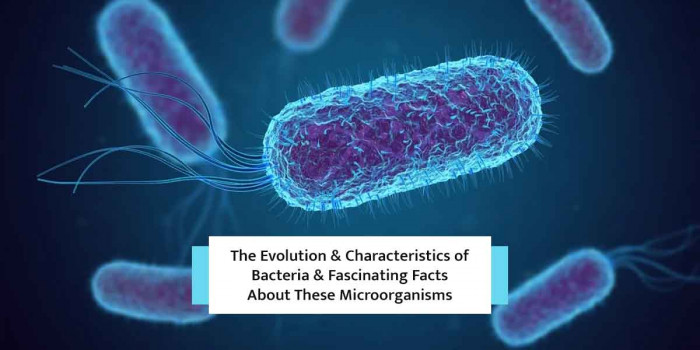10 Most Dangerous Animals in the World That Could Take Your Life in Minutes
You might think that the shark is the most dangerous animal in the world. But do you know several beasts are downright deadly, and the shark is no closer to them?
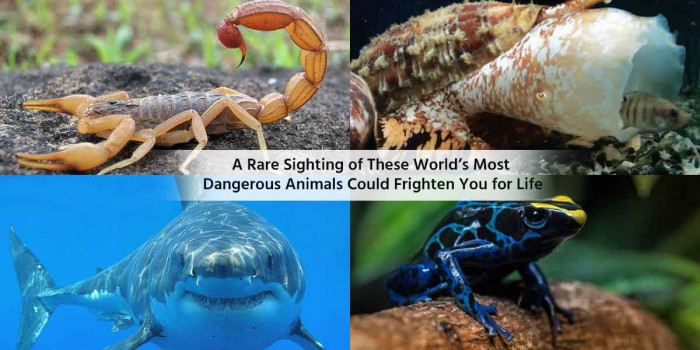
You would agree that some animals are the cutest creatures on earth. Animals like hedgehogs look cute and are fun to play with. But animals like the Great White Shark and Black Mamba are dangerous. Seeing them from a distance is enough to scare you for life.
Do you know which animal is considered to be the most dangerous animal in the world? No? As a fact, some of the animals from the animal kingdom happen to be extremely vicious. Below is a list of animals that are downright deadly and are responsible for the majority of deaths (including humans and animals).
1. Cone Snail
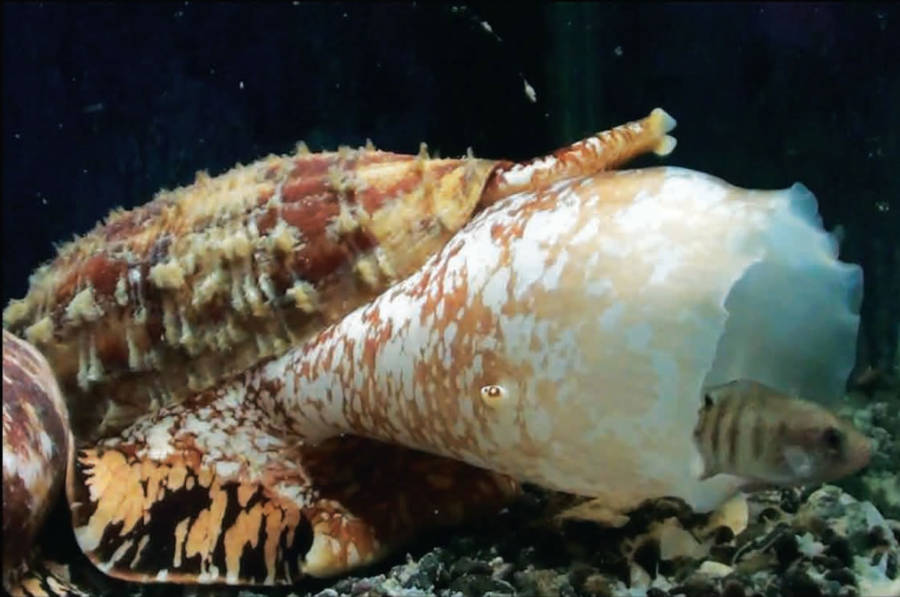
Have you ever heard or read about Cone Snail? Cone Snail or cones are mainly peptides. It is carnivorous and feeds on small fish, marine worms, and other cone snails. They are slow-moving creatures, so they use a venomous harpoon and catch faster-moving prey. The vibrant colors of cone snails attract everyone, and sometimes people pick these live animals. Cone Snail is a bizarre animal that you might not have spotted around you.
This is risky, as big cone snails could penetrate your skin. The shells of cone snail might differ in size and look like a cone. This beautiful looking sea creature lives in a shell that is made of brown and white patterns. Symptoms of cone snail bite include numbness, pain, vomiting, and other severe changes in the body.
Cone Snail species have toxic harpoons that could fire in any direction. Their venom contains different compounds, and its composition varies in cone snails. The toxins stop nerve cells from passing messages and could cause paralysis in a moment. Cone snail sometimes is also called cigarette snail.
2. Box Jellyfish
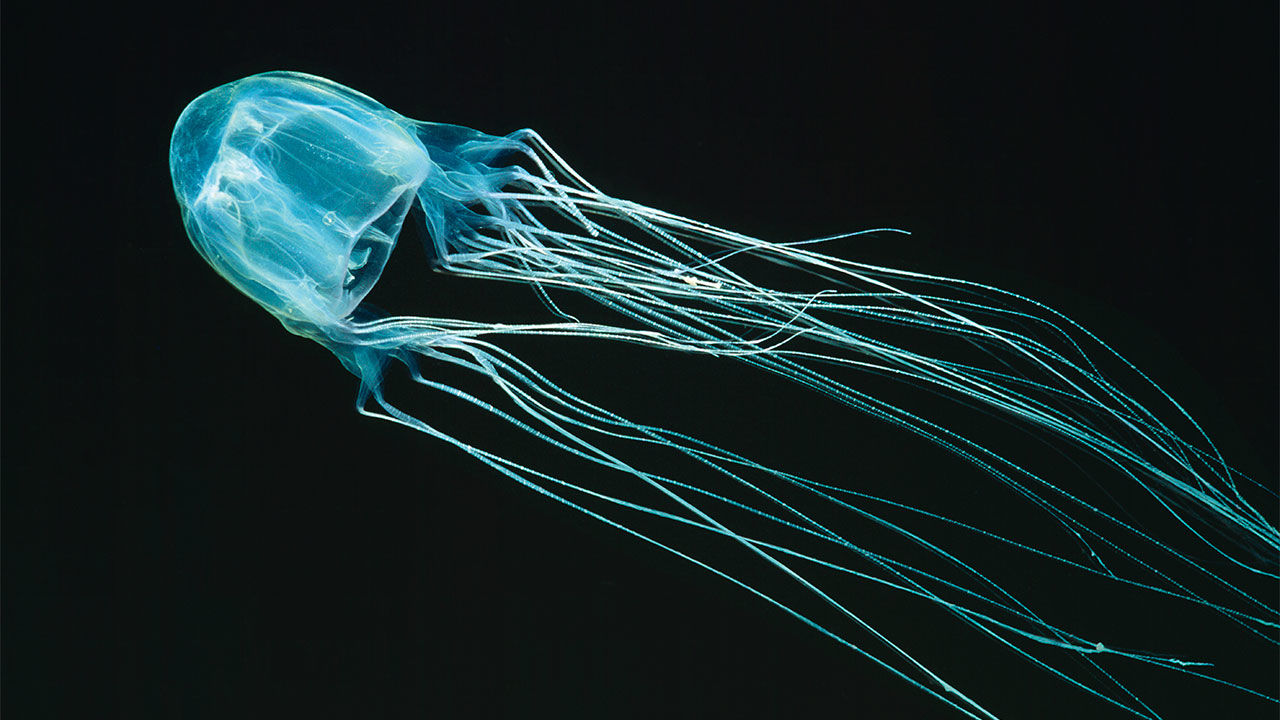
This jellyfish is different from those that you might have seen in Palau Lake. There you could swim with jellyfish, but you can’t dare to touch box jellyfish. They are found in Indo-Pacific waters and are considered to be the most venomous marine animal in the world.
It uses its tentacles to catch prey. Box jellyfish might not look dangerous, but a sting from this creature is enough to kill you. They have tentacles covered in booby traps and are loaded with poison. Animals or people who come in contact with box jellyfish’s poison may experience cardiac arrest and paralysis (sometimes death). You would be shocked to know that a large box jellyfish has enough poison to kill over 50 humans.
A mature box jellyfish could measure up to 7.9in long and weigh up to 3 kgs. There are around 29 different species of box jellyfish. They have 24 eyes (six lots of four eyes) on the side of the body. They are fast swimmers and could catch prey easily. The eyes of box jellyfish respond to light and have a visual field of 90-100 degrees.
3. Tsetse Fly
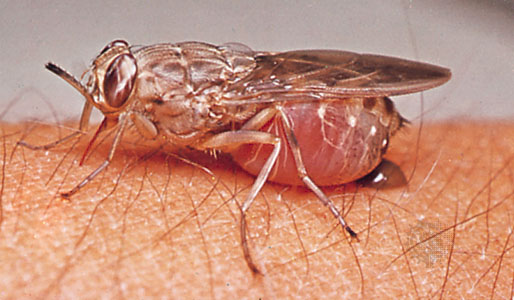
The tsetse fly is an insect that measures between 9 to 17mm. It is usually found in Sub-Saharan African. Their size is similar to the housefly and feeds blood.
It is yellowish-brown or dark brown and has dark markings on the chest. Tsetse fly has an abdomen, head, and thorax. They have widely separated eyes and a pair of wings. Male Tsetse fly attacks on humans; whereas, female fly attacks animals. You won’t believe it, but a Tsetse Fly could drink three times more blood than its weight at one time.
Common symptoms of Tsetse fly bite are headache, fever, and sleeping sickness. Male Tsetse could live up to two-three weeks, while female lives up to 4 months. They have a pair of antennas on the top of the head and are equipped with arista covered with branched hairs.
There are no medications available for Tsetse fly sting, but it is recommended to wear neutral-colored dresses as Tsetse fly attracted to bright colors if you are in the Sub-Saharan African region.
4. Great White Shark
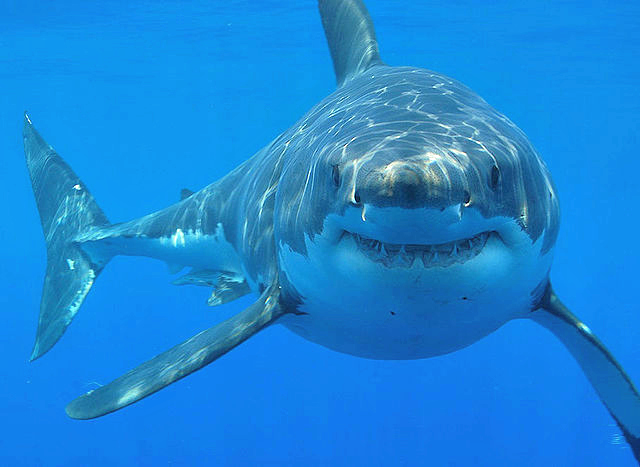
Great White Shark, or better known as a white pointer, could be found in the coastal surface waters of the major oceans. They could also be found in northwestern Africa, Sri Lanka, Mauritius, and Hawaii. They are excellent swimmers and the largest predatory fish on the planet.
They feed on small fish. But when they turn adults, they feed small whales, sea lions, dolphins, and other aquatic creatures. Great White Shark could grow up to 20 feet and weigh over 5000lbs. They have a great sense of smell. For instance, if there is a drop of blood in around 100 liters of blood, then also Great White Shark could smell it.
They have serrated blade-like teeth. The upper jaw contains around 25-28 teeth, and the lower jaw has over 25 teeth. Contrary to belief, the Great White Shark doesn’t eat humans. But it also reported that it attacks humans only when they are confused or curious.
If it sees humans in the water, it tries to investigate, and this could lead to an accidental attack. Humans hunt sharks to make lubricants and leather.
5. Black Mamba
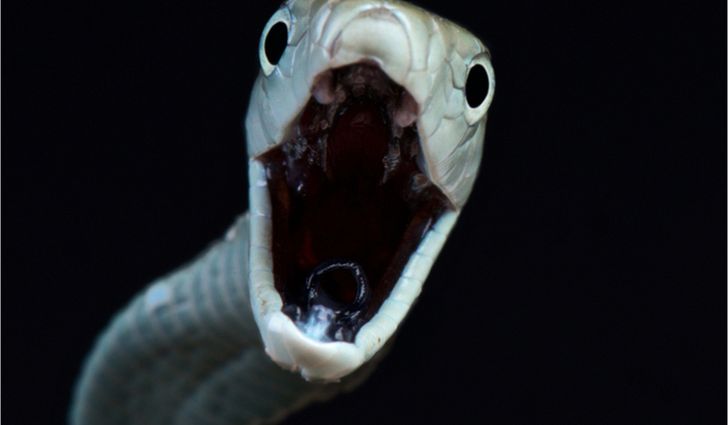
Black Mamba is considered to be one of the most aggressive animals in the world. Usually, the black mamba is shy, but when it is disturbed, then spread its cobra-like neck and hiss. When it bites, it bites repeatedly and kills its prey. It is rarely black and is usually olive green, greyish brown, and grey. Black Mamba has been blamed for several human deaths.
They are found in the rocky hills of eastern Africa. They could reach up to 15 feet in length and slither at a speed of 12.5 miles per hour. Black Mamba has incredible speed, but it doesn’t use that to hunt prey; instead, to escape threats.
The mating season of Black Mamba starts from September to February. It feeds on birds, bats, and other small mammals. Two drops of venom could kill a human, and Black Mamba could have 20 drops of venom in its fangs. Not all Black Mamba’s bite is fatal; it depends on where and how much venom is injected.
6. Poison Dart Frog
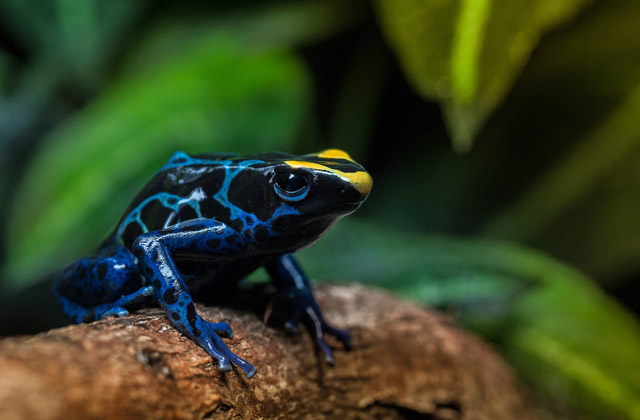
Poison Dart Frog is also one of the most dangerous animals in the world. It is diurnal and is considered to be the most toxic species. Depending on the habitats, the color of the Poison Dart Frog changes. Their color may range from copper, gold, green, black, and yellow. This two-inch poisonous frog has enough venom to kill ten humans.
Not all dart frogs are poisonous, but some can be lethal to touch. Dangerous dart frogs have vibrant colors to warn predators. These dangerous creatures don’t need to bite to kill; instead, touching them is enough to transfer poison from one person to another. The beautiful colors of the poison dart frog are enough to catch your attention. But, don’t you ever think to own this wild animal as a pet.
They live in rainforest habitats in South America. Certain species of dart frogs are found in marshes, swamp areas, and shrublands. The unique feature of dart frog is the colored skin with complex patterns. It eats ants, caterpillars, beetles, and other species.
7. Deathstalker
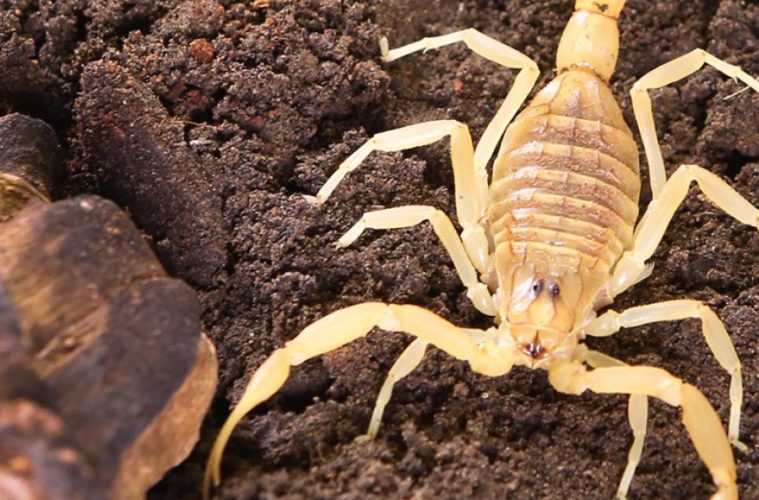
Deathstalker is extremely dangerous and even has ‘death’ in its name. It is also known as Palestine yellow scorpion and could be found in the Arabian Desert, Arabian Peninsula, Ethiopia, and western India in the north and southeast. It could grow up to 4 inches and can be aggressive.
During the day, deathstalker hide under rocks. The lifespan of deathstalker in the wild is not known, but other species could live for 5 to 25 years. It feeds on large insects, mealworms, and other small insects.
The deathstalker’s venom is poisonous and contains a mixture of neurotoxins, which could cause unbearable pain. Several countries have banned the trading of deathstalkers. Female deathstalkers are larger than male deathstalkers.
8. Stonefish
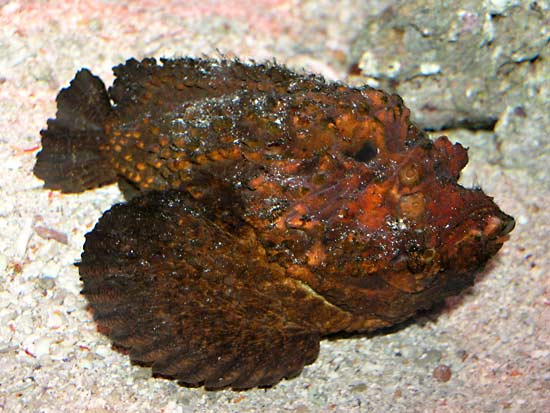
Stonefish is a dangerous sea animal. It has excellent camouflage skills. It surrounds well with the surroundings and is often mistaken as stone or a part of the coral reef. It is carnivorous and feeds shrimps and other fish. It is a slow swimmer, but when it chases its prey, it increases its speed. It could attack prey in less than 0.015 seconds. This aquatic animal looks adorable but is extremely poisonous. In the wild, it could live for 5-10 years.
Stonefish can survive for 24 hrs outside the water. It can also spit water. So be careful when you walk on the beach, where they are known to be present in the coastal regions of the Pacific and Indian ocean. Do you know this amazing fact about Stonefish? They are rarely eaten by humans but are sometimes caught for the aquarium.
It could grow up to 20 inches and weigh up to 6 pounds. It takes less than an hour for Stonefish to kill a human. People have suffered Stonefish stung by stepping on it accidentally. Stonefish alone is not the master of camouflage; these animals are also experts of their surroundings.
9. Africanized Honey Bees
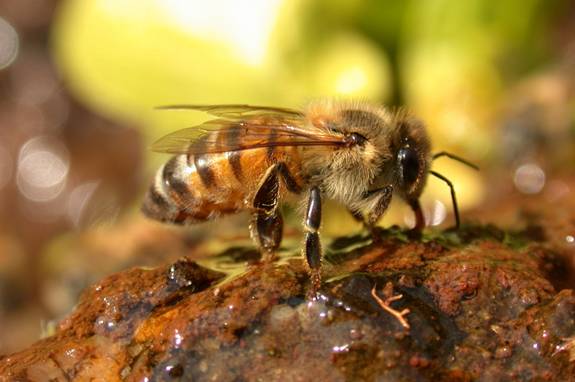
It is the hybrid species of the Honey bee. They are more defensive and faster than European bees. According to reports, Africanized Honey Bees have killed over 1000 humans. It has also killed horses and other animals.
Over 25 subspecies have been recognized as Apis mellifera on geographic variations. All subspecies of Africanized Honey Bee could interbreed. They look similar to domestic honey bees. The only way to identify them is by their size. They are golden yellow and are smaller than their counterparts. They do not have a particular choice about the nest.
They could live in the walls of a home, in tree cavities, and anywhere. They do not harm humans, but once threatened, they remain aggressive for as long as 20-24 hours. They are attracted to dark colors, hair, perfume, and scented candles.
They usually sting when their home is threatened or when they are crushed (accidentally). The sting of the Africanized honey bee is not lethal unless there is a group of AFB or when you are allergic to the venom.
10. Estuarine or Saltwater Crocodile
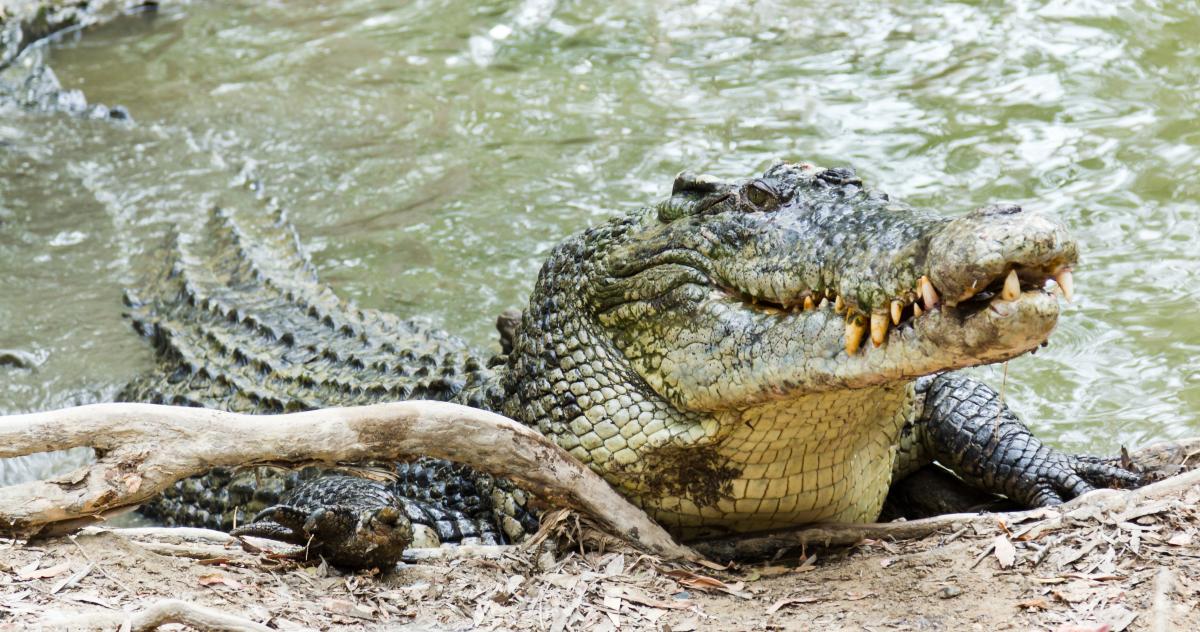
The saltwater crocodile is the largest living reptile and could be found in coastal habitats. They are very well adapted in saltwater and could spend days or weeks at sea. They have long lifespans and could live for over 65 years. A saltwater crocodile can live for over a century. The central nervous system of Estuarine crocodile is wired in such a way that its left side eye remains open when the right side of the brain is awake and vice versa.
They are excellent swimmers and are known to travel long distances of around 900kms by sea. It feeds on mammals, birds, and fish. Saltwater crocodiles usually hunt at night. A large male saltwater crocodile could eat anything that comes on its way, including sharks and humans.
The largest saltwater crocodile recorded was about 6.3m long, but people have seen a saltwater crocodile that is 7m long in the past. Male saltwater could weigh around 500kgs; whereas, female saltwater weighs less than 100kgs. They are cold-blooded and depend on the sun and other external sources to warm up. It is internationally classified as endangered due to the destruction of the habitat. Here are other endangered species that should be protected in any case.
Final Words
While some animals could be owned as a pet, others are as dangerous as hell. Beware when you visit the areas where these dangerous animals are found. Also, remember not all cute looking creatures that you see are adorable. Many of the dangerous animals in the world that are small are deadliest of all. Apart from the animals listed above, here are other animals that could kill you easily.
Do you know any other animal more dangerous than the listed above? If so, then drop your comments below.
Popular Posts
10 Biggest Water Dinosaurs & Sea Monsters Ever Found in Archaeology
The present-day ocean is certainly a scary place where giant sharks, whales, squids, barracuda, and numerous other marine creatures live.
Kimberly Campbell
6 Amazing Things We Should Learn From Camel Feet
Camels are a kind of mammals with the humped back, long legs, and lipped snout. They were domesticated nearly 3000 years ago are still used for transportation.
Kimberly Campbell
80 Most Popular Long Neck Dinosaurs Ever Recorded in History
Do you know the largest creatures ever walk on the earth were the long tailed and long neck dinosaurs which were called as Sauropods?
Kevin Green








